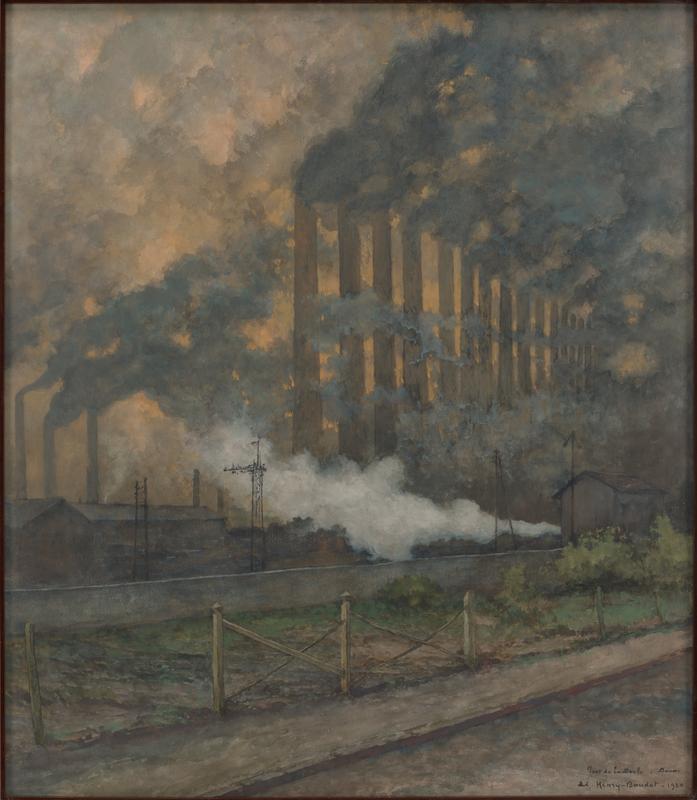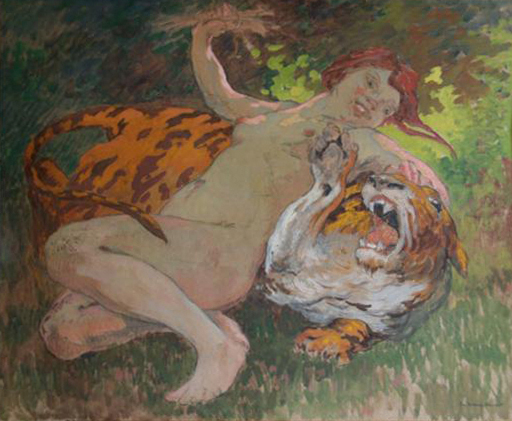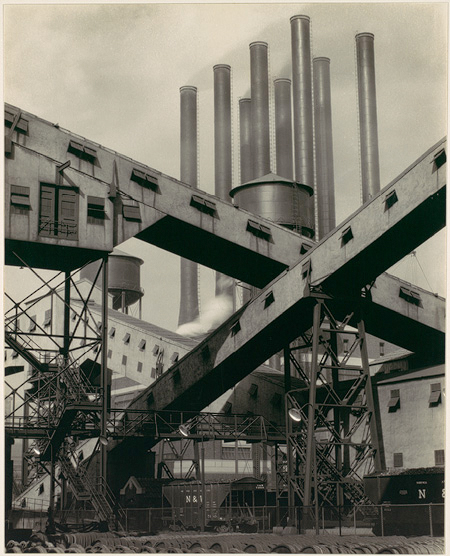
85. Edouard-Louis Henry-Baudot, Deule Bridge, Douai
| Artist | Edouard-Louis Henry-Baudot, French, Nancy 1871–Théoule-sur-Mer 1953 |
| Title, Date | Deule Bridge, Douai (Le pont de la Deule, Douai), 1930 |
| Medium | Pen and ink, watercolor |
| Dimensions | 31 1/2 × 27 11/16 in. (80 × 70.4 cm) |
| Inscriptions + Marks | Lower right: Pont de la Deule / Ed. Henry-Baudot–1930 |
| Provenance | Atelier Edouard-Louis Henry-Baudot sale, Hôtel Drouot, Paris, December 14, 2012, no. 300, as “Usine à la Plaine Saint-Denis”; [Chantal Kiener, Paris, until 2014; to Weisberg]; Yvonne and Gabriel Weisberg, Minneapolis |
| Exhibition History | "Reflections on Reality: Drawings and Paintings from the Weisberg Collection," Mia, 2022–23 |
| Credit Line | Promised gift of Gabriel P. and Yvonne M.L. Weisberg, Minneapolis |
For years, Edouard-Louis Henry-Baudot made Japonesque and lush Art Nouveau images of cavorting nudes and animals, often in the company of nymphs and satyrs (fig. 1).1 In the late 1920s, he abruptly turned his attention to modernist industrial landscapes. The present drawing, set in the city of Douai, in northern France, belongs to a series of watercolors featuring factories, foundries, and railways.2 The Deule is a river that runs through Douai, and Pont de la Deule is a railway stop in an industrial zone on the north side of the city.

As in Henry-Baudot’s other scenes of this time, rows of smokestacks spew dark plumes into the air. Though today we might be horrified by the pollution, many of the artist’s contemporaries saw such exhaust as a sign of vitality and productivity. The use of diagonals serves to emphasize this energy. As the smoke drifts at an angle toward our right, a train sends a white cloud of steam in the other direction, suggesting rapid movement along the tracks. The diagonal lines in the foreground provide a dynamic contrast to the towering chimneys.
Henry-Baudot’s sudden interest in industrial scenes may have been influenced by photographs that heightened their realism. One example is the riveting work of the American Charles Sheeler, whose 1927 images of Ford Motor Company’s River Rouge plant in Dearborn, Michigan, circulated widely in Europe (fig. 2). Regardless of where Henry-Baudot found inspiration, drawings such as this one demonstrate how the proliferation of factories and trains changed the landscape. He was thus at the forefront of artists exploring the impact of burgeoning industrialization on society.
GPW

Notes
He was born Edouard-Louis Henry, but because the name Henry was common in the Nancy region where he was born, he added his mother’s maiden name to his in 1893 in order to distinguish himself from the other Henrys. ↩︎
The Weisberg drawing and other examples of Henry-Baudot’s industrial landscapes appeared at auction at Hôtel Drouot, Paris, December 14, 2012, nos. 297–301. ↩︎